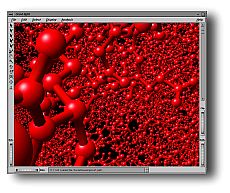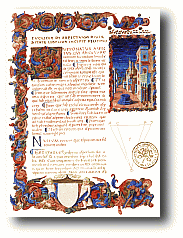
 Als hommage hieronder een samenvatting van de webpagina van Fr.v.H. H.
Als hommage hieronder een samenvatting van de webpagina van Fr.v.H. H." Hi, my name is Frans.
-
- I'm your crazy scientist for today. "
My full name is Frans van Hoesel. I studied technical and experimental physics at the University of Groningen in the Netherlands. In the last stage of my study, I used a clever experimental setup to measure the minimum energy a photon must have in order to be seen by an eye at absolute zero Kelvin. Once you are a scientist, you are supposed to do serious research like trying to determine the 3D structure of a molecule. For the data processing I wrote the snarf program, which turned out to be a great success, and it is after more than a decade still in use by the nmr department as the main data processing software.

My next job was at an observatory, where I build a Heterodyned Holographic Spectrometer, which is used for extremely high resolution spectrometry enabling astronomers to measure tiny shifts in the spectrum (the light equivalent of the doppler effect) to observe 'starquakes'. The 'starquakes' are oscillations on the surface of a star. As these oscillations bounce back from the core of the star, the exact patterns of the oscillations provides the astronomers with information about the core. The software I wrote and the hardware I helped to design are still in permanent use at the observatory on La Palma.
Next, I worked in a project to help the European Community to simulate molecules on parallel computers. Need I say more. One of the more useful results out of this projects was the data compression part which I designed and implemented. Big parallel computers are all different and I came to realize that there was a need for a good portable way to write binary data, which allowed the scientist doing molecular dynamics simulations to exchange binary data between computers. At the same time a highly efficient compression algoritme was added, which saves data storage and transmission time by reducing the data size by a factor four and even a factor ten compared to methods where people used a compressed ascii format (for reasons of portability)

Currently I'm working on a program called Grovi. Grovi is a
powerful and very fast program (more than ten times faster!) to visualize
large molecules using high quality rendering. It is capable of showing the
movements of the atoms as calculated by molecular simulations programs such as
the GroMacs program and visualize the results of analysis in real time.
The final program will be truly amazing as it will allow true interactive
interaction with running simulations. Allowing to change parameters in the
simulation and get real time results from the simulation and the analysis
programs. This involves clever algorithmes and some good psychology so people
get new feedback from simulations at least once every six seconds. Currently
normal molecular simulations may take days to produce output.
Beside all this I'm trying to keep all the users happy on our cluster of
around fourty SGI machines which I maintain for the molecular dynamics group. I created
their website including the very nice gallery with some good looking
images, which are now illustrating our corridor on the ground floor. Many
people walking in the corridor stop and admire the beauty of naked
molecules.
I'm also involved in a project for computer aided education, so
the studens of the biology, chemistry and physics department can do a course
in error analysis and statistics from their pc at home.
During all this, I wasted a lot of time writing other programs, such
as the smallest, fully functional 6502 dis-assembler ever written. (253
bytes). I wrote very fast printer drivers for deskjet printers. I wrote
amazing extensions for the Acorn Atom computer which were copied by thousands
of enthausiastic users and published in national hobby magazines. I helped
writing the postscript output module for NCSA mosiac (the precessor of
netscape).
I wasted even more time while creating the worlds first big web exhibit, a milestone in the development of the world wide web (according to Tim Berners-Lee, one of the godfathers of the current web), which was visited by millions of people and still is in quite a demand, even though it looks pretty old.
The image on the left is an example from my exhibit. It is Euclid's "Optics" written in Latin in 1458 and is the earliest surviving work on geometrical optics, and is generally found in Greek manuscripts along with elementary works on spherical astronomy. There were a number of medieval Latin translations, which became of new importance in the fifteenth century for the theory of linear perspective. This technique is beautifully illustrated here in the miniature of a street scene in this elegant manuscript from the library of the Duke of Urbino. It may once have been in the possession of Piero della Francesca, who wrote one of the principal treatises on perspective in painting.But the ultimate waste of time is ofcourse programming the blix game, which is
totally useless, unless you want to waste more time playing the thing. I
programmed it for the world-wide Indizone games contest from Silicon Graphics
and won the first prize.  It all started with a real maze on a sphere (which is
quite special, because on a sphere there is no exit to the maze), but ended up
as an arcade game where a little mouse drops bombs on spiders, flying fish,
walking bones etc. The game was the first game with a online world-wide
highscore list and included pictures of the players. The biggest programming
challenge was to get a descent frame rate on machines that had hardly any
hardware support for graphics (Indigo R3000, with no zbuffer, no geometry
engine, slow processor, 4-bit double buffered graphics). The program was given
away with every purchase of an SGI computer.
It all started with a real maze on a sphere (which is
quite special, because on a sphere there is no exit to the maze), but ended up
as an arcade game where a little mouse drops bombs on spiders, flying fish,
walking bones etc. The game was the first game with a online world-wide
highscore list and included pictures of the players. The biggest programming
challenge was to get a descent frame rate on machines that had hardly any
hardware support for graphics (Indigo R3000, with no zbuffer, no geometry
engine, slow processor, 4-bit double buffered graphics). The program was given
away with every purchase of an SGI computer.
 More
time wasters I wrote are: 'Lumbus, the eyecatcher'
(which analyses the input from the Indy camera to drive the game; The method I
developped for the game, is also used as a cheap head-tracking device and as
such used in stereoscopic displays), Timewarp' (a 3d
puzzle game) and 'Snakes' (which showed for 1.5 years on big screens at
Waterloo station in London where millions of people must have seen it and
thousands of people played it using their cellular phone as input device).
More
time wasters I wrote are: 'Lumbus, the eyecatcher'
(which analyses the input from the Indy camera to drive the game; The method I
developped for the game, is also used as a cheap head-tracking device and as
such used in stereoscopic displays), Timewarp' (a 3d
puzzle game) and 'Snakes' (which showed for 1.5 years on big screens at
Waterloo station in London where millions of people must have seen it and
thousands of people played it using their cellular phone as input device).